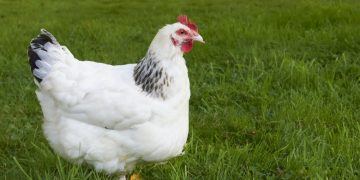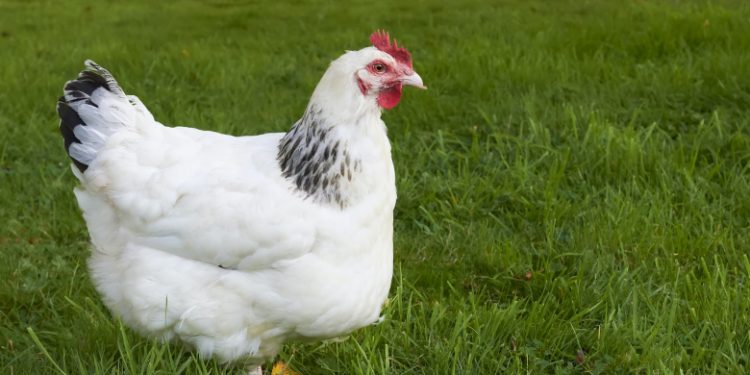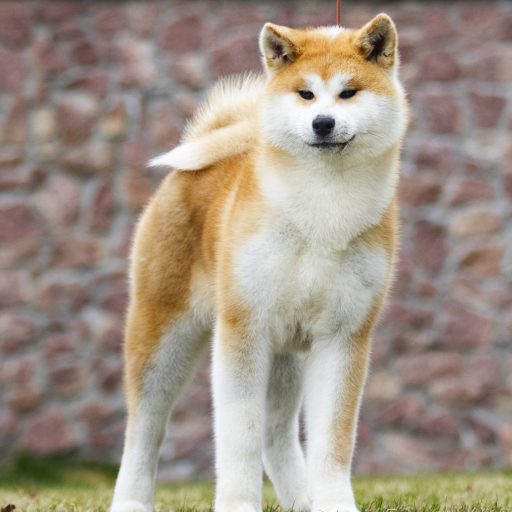The Sussex Hen is perfect for beginner breeders and for those who want to add a friendly hen to their growing coop. Her prestigious heritage, her curious nature and her great laying abilities are all assets that make her the queen of the farmyard.
Physical peculiarities
The Sussex can be described as a “heavy” breed, with soft feathers and very close together. From a speckled Sussex to a silver Sussex, you will never be disappointed. The beauty of its plumage improves even with successive moults. Unfortunately, silver, fawn and red varieties are extremely rare today.
Egg template: 50/60g. Cream to brown colored shell.
Plumage: white, black speckled white, black ermine fawn, red, silver gray tricolor, cuckoo.
Eyes: irises ranging from red to orange depending on the plumage.
Beak: small, arched, horn-coloured to gray depending on the plumage.
Crest: simple, red.
Chest: broad and well developed
Mumps: red.
Tarsi: medium, flesh-colored to white, with 4 toes.
Behavior and character
Sussexes are docile, yet confident and friendly hens. They are very curious gallinaceans that can follow you around the garden to enjoy your company or wait for treats.
With children, Sussex hens are almost nannies. They are so soft that they tolerate even the most clumsy hands. You can therefore easily involve your children in raising these hens and make good memories for yourself.
This breed is so unaggressive that even the roosters are gentle. They should therefore not be placed in the company of races that are too dominant, because they will be at the bottom of the hierarchical ladder and risk suffering from bullying.
Feed
The Sussex hen loves to dig in the ground, she is very good at it, she draws a large part of her food from the garden, which makes her a thrifty hen. It still belongs to the category of large breeds, so do not plan to drastically reduce the doses of food. As an excellent layer, she is satisfied with a diet based on a mixture of cereals rich in fiber and protein (wheat, corn, oats, barley, protein weight, etc.). It is a great gourmand who will peck at all the insects that will pass under its feet and will feast on vegetable peelings or other treats that you could offer it. Don’t forget the water of course, at will throughout the day. A hen can drink up to half a liter a day.
Reproduction
The Sussex is a large hen, so she is fertile quite late (7/8 months). She tends to be a good brooder and makes an excellent mother. Its suitability for brooding depends on the variety you choose: the White Sussex is rarely broody, although this may depend on its lineage.
Another appeal of the Sussex hen is its ability to lay eggs during the winter when most other hens have stopped production for the year. It is a breed that breeds (and therefore begins brooding) during the warmer months.
Health
The Sussex is a hardy bird that is resistant to a wide spectrum of temperatures and conditions. She doesn’t really have any notable health problems, except for a propensity for obesity due to her gluttony. In the case of outdoor breeding, the risk is very low.
Like most hens, the Sussex requires little treatment, just good hygiene. Be sure to change the bedding at least once a week and clean the coop monthly. Another way to avoid parasites is to deworm your hens and of course to keep their water clean and clear.
Place of life
These hens are equally at home in open, confined spaces or in the presence of humans, although they mate and reproduce best in wide open spaces.
They are great gleaners who spend their days with their beaks in the ground, pecking like a real barnyard hen.
The Sussex is very resistant, especially to the cold. Summer heat is tolerated as long as they have shady places to rest and, of course, access to cool water.
The ideal is therefore to have a rather open chicken coop within a spacious enclosure or with possible access to a fenced garden. Sussexes fly very poorly so very high barriers are not necessary and perches should be fairly sturdy and close to the ground.
Breed History
It was in London in 1845 that a Sussex was exhibited for the very first time. Under the name of Sussex hen or hen of Kent. This was the beginning of this breed as such. Although Kent was mentioned, this hen was indeed created in Sussex. It comes from a cross between a local race and other races such as Cochin, Dorkings and Brahma, to obtain the appearance












